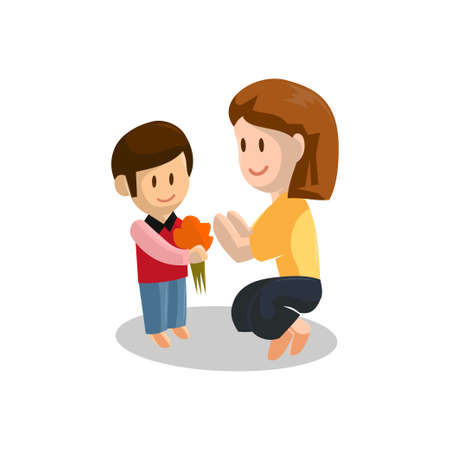1. Introduction to Potty Training Methods
Potty training is an important milestone in your child’s development, but with so many methods available, it can be overwhelming to decide which one is best. Every child is different, so the key is finding a method that fits your childs personality and learning style.
Understanding Different Potty Training Methods
There are several approaches to potty training, each with its own advantages. Some parents prefer a structured plan, while others take a more relaxed approach. Here’s a quick overview of the most popular potty training methods:
| Method | Description | Best For |
|---|---|---|
| The 3-Day Method | A fast-paced approach where parents dedicate three days to intensive potty training. | Parents who can stay home for a few days and children who adapt quickly to change. |
| The Child-Led Method | A flexible approach where the child decides when they are ready to start. | Children who resist pressure or need more time to adjust. |
| The Scheduled Potty Training Method | A structured approach where parents set regular potty breaks throughout the day. | Toddlers who thrive on routine and predictability. |
| The Reward-Based Method | A system that uses small rewards like stickers or treats to encourage potty use. | Children who respond well to positive reinforcement. |
Selecting the Right Method for Your Child
The best potty training method depends on your child’s temperament, developmental readiness, and family lifestyle. Here are some factors to consider when making your decision:
- Your Child’s Readiness: Look for signs such as staying dry for longer periods, showing interest in the toilet, or communicating when they need to go.
- Your Family’s Schedule: If you have a busy schedule, a gradual approach may work better than an intensive method like the 3-Day Method.
- Your Child’s Personality: Some kids thrive on structure, while others do better with a more relaxed approach.
- Your Level of Patience: Certain methods require more parental involvement and patience than others.
A Flexible Approach Works Best
You don’t have to stick to just one method! Many parents find success by combining different techniques based on what works best for their child. The key is consistency and encouragement—potty training should be a positive experience for both you and your little one.
Traditional vs. Child-Led Potty Training
When it comes to potty training, parents often find themselves choosing between two main approaches: traditional potty training and child-led potty training. Each method has its own benefits and challenges, and the right choice depends on your childs personality and readiness.
Traditional Potty Training
Traditional potty training follows a structured approach where parents take the lead in teaching their child how and when to use the toilet. This method often involves scheduled bathroom trips, rewards for successful attempts, and consistent reinforcement.
Pros of Traditional Potty Training
- Establishes a clear routine for the child
- Can lead to faster results if the child responds well
- Helpful for children attending daycare or preschool with set schedules
Cons of Traditional Potty Training
- Might create resistance if the child is not ready
- Puts more pressure on parents to maintain consistency
- Some children may feel stressed by the structured approach
Child-Led Potty Training
This method allows the child to take the lead in their potty training journey. Parents provide encouragement and guidance but wait until their child shows signs of readiness before starting formal training.
Pros of Child-Led Potty Training
- Tends to be a more relaxed experience for both parents and child
- The child feels more in control, which can reduce resistance
- Might lead to fewer accidents since the child initiates when they are ready
Cons of Child-Led Potty Training
- The process can take longer compared to traditional methods
- Might be harder for parents who need their child trained by a certain age (e.g., for preschool)
- Lack of structure could lead to inconsistency in progress
A Side-by-Side Comparison
| Traditional Potty Training | Child-Led Potty Training | |
|---|---|---|
| Main Approach | Parent-directed with a structured plan | The child decides when they are ready |
| Pace of Learning | Tends to be faster if followed consistently | Might take longer as it depends on the childs readiness |
| Parental Involvement | High – requires consistent guidance and scheduling | Lighter – parents offer support but let the child lead |
| Potential Challenges | The child might resist if they feel pressured | Lack of consistency may delay full training success |
| Suits Which Type of Child? | A child who responds well to structure and routines | A child who prefers independence and self-guidance |
No single method works best for every child, so consider your childs personality and your familys needs when deciding which potty training approach to take.

3. The Three-Day Method: Fast-Track to Success?
One of the most talked-about potty training methods is the three-day method. Parents who want a fast and efficient way to get their child out of diapers often turn to this approach. But does it really work for all children? Let’s explore how it works and whether its the right fit for your little one.
How Does the Three-Day Method Work?
The three-day potty training method is an intensive, focused approach that requires full commitment from parents. During these three days, your child will go diaper-free and learn to use the potty with constant guidance and encouragement. Here’s what the process generally looks like:
| Day | Main Focus |
|---|---|
| Day 1 | Introduce underwear, encourage frequent potty trips, and watch for signs they need to go. |
| Day 2 | Continue prompting them to use the potty, reinforce successes with praise, and handle accidents calmly. |
| Day 3 | Your child should start recognizing when they need to go and initiate using the potty on their own. |
Does It Work for Every Child?
This method has been successful for many families, but it’s not a one-size-fits-all solution. Some children grasp potty training quickly, while others may need more time. Factors such as personality, readiness, and comfort level with change can impact success.
Signs Your Child May Be Ready for the Three-Day Method
- Your child stays dry for longer periods.
- Your child shows interest in using the toilet or wearing underwear.
- Your child can follow basic instructions.
- Your child communicates when they need to go (verbally or through gestures).
Pros and Cons of the Three-Day Method
| Pros | Cons |
|---|---|
| No more diapers in just a few days. | This method requires complete focus for three full days. |
| Cuts down on long-term potty training stress. | Your child may still have accidents after three days. |
| Makes potty training a clear and consistent process. | If your child isn’t ready, it can lead to frustration. |
Tips for a Successful Three-Day Potty Training Experience
- Create a dedicated space: Keep your child in a comfortable area where accidents are easy to clean up.
- Praise every success: Use positive reinforcement like clapping, high-fives, or small rewards.
- Avoid punishments: Accidents are normal—stay patient and supportive.
- Keeps lots of fluids available: This encourages more bathroom trips and faster learning.
- Dress them in easy-to-remove clothing: Avoid complicated buttons or zippers to make potty trips easier.
The Bottom Line: Is It Right for Your Child?
The three-day method can be an effective way to jumpstart potty training, but it’s important to consider if your child is developmentally ready. If your little one thrives on structure and responds well to encouragement, this could be a great option! However, if they show resistance or struggle with change, a slower approach may be better suited for them.
4. Gradual Potty Training: A Stress-Free Approach
Potty training doesn’t have to be a race. For many families, a slower, more gradual approach can make the process smoother and less stressful for both parents and kids. Instead of rushing to get everything done in a few days, this method allows children to learn at their own pace while building confidence along the way.
Why Choose a Gradual Approach?
Every child is different, and some may feel overwhelmed by fast-paced potty training methods. A gradual approach helps reduce pressure and creates a positive experience that encourages independence. Here are some benefits:
| Benefit | Description |
|---|---|
| Less Stress | No strict deadlines mean fewer frustrations for both parents and toddlers. |
| More Confidence | Kids gradually become comfortable using the potty without fear or anxiety. |
| Better Habit Formation | Slowly introducing potty routines helps establish long-term habits. |
| Adaptable Timeline | You can adjust the pace based on your childs readiness and comfort level. |
How to Implement Gradual Potty Training
If you’re considering this method, here’s how you can make it work:
1. Introduce the Potty Early
Start by familiarizing your child with the potty. Let them sit on it fully clothed at first to get used to the idea.
2. Encourage Without Pressure
Praise small steps like sitting on the potty or telling you when they need to go, but avoid forcing them to use it before they’re ready.
3. Establish Simple Routines
Create a daily routine where your child sits on the potty at specific times, such as after waking up or before bath time.
4. Use Gentle Reminders
Instead of asking constantly, casually remind them about the potty throughout the day.
5. Celebrate Small Wins
Acknowledge progress with encouragement, stickers, or small rewards to keep motivation high.
Signs Your Child is Ready for the Next Step
A gradual approach means recognizing when your child is ready to move forward. Look for these signs:
- They stay dry for longer periods.
- They tell you when they need to go or after theyve gone.
- They show interest in wearing underwear instead of diapers.
- They willingly sit on the potty without hesitation.
Common Challenges and Solutions
| Challenge | Solution |
|---|---|
| Lack of Interest | Make potty time fun with books or songs. |
| Accidents Happen Often | Stay patient and avoid punishment; reinforce positive behavior instead. |
| Nervous About Using the Potty | Let them watch an older sibling or parent use the toilet to ease anxiety. |
| Takes Longer Than Expected | Every child moves at their own pace—stay consistent and supportive. |
The Key to Success: Patience and Encouragement
The gradual potty training method works best when parents remain patient and encouraging. By allowing your child to take small steps toward independence, you create a positive learning experience that leads to long-term success without unnecessary stress.
5. Troubleshooting Common Potty Training Challenges
Potty training isn’t always smooth sailing. Many parents encounter setbacks, regressions, and other struggles along the way. If your child is having difficulties, don’t worry—this is completely normal! Below are some common potty training challenges and tips to overcome them.
Accidents Happen: How to Handle Them
Even after making progress, accidents can still occur. Instead of reacting with frustration, try these steps:
- Stay Calm: Reassure your child that accidents are okay and part of the learning process.
- Avoid Punishment: Negative reactions can create anxiety and slow progress.
- Encourage Responsibility: Have your child help clean up (as age-appropriate) to reinforce accountability.
- Check Bathroom Breaks: Ensure they’re using the potty at regular intervals.
Dealing with Potty Training Regression
If your child was doing well but suddenly starts having accidents again, it could be due to stress, a change in routine, or even a new sibling. Here’s how to get back on track:
- Identify Triggers: Look for changes in their environment that may be causing stress.
- Reinforce Routine: Stick to a consistent potty schedule to rebuild habits.
- Avoid Pressure: Give gentle encouragement without forcing them.
- Praise Success: Celebrate small wins to boost confidence.
Your Child Refuses to Use the Potty
If your child resists using the toilet, it might mean they’re not ready or they need extra motivation. Try these strategies:
- Make It Fun: Use stickers, songs, or a potty training chart to create excitement.
- Let Them Choose: Allow them to pick out their own potty seat or underwear to build enthusiasm.
- No Pressure: Some kids take longer; forcing it can lead to more resistance.
- Praise Progress: Even sitting on the potty without using it is a step forward!
Troubleshooting Table: Common Problems & Solutions
| Challenge | Possible Cause | Solution |
|---|---|---|
| Frequent Accidents | Lack of consistency or distractions | Create a potty schedule and remind them regularly. |
| Avoiding Poop on the Potty | Anxiety about pooping or discomfort | Treat constipation if needed, read books about using the potty, and offer rewards. |
| Nervous About Public Restrooms | Loud noises or unfamiliarity | Cary a portable potty seat and reassure them before entering public restrooms. |
| No Interest in Potty Training | Might not be ready yet | Take a break and try again in a few weeks. |
The Importance of Patience and Encouragement
The key to overcoming potty training challenges is patience. Every child learns at their own pace, and setbacks are part of the journey. Keep a positive attitude, provide reassurance, and celebrate progress—no matter how small!


